 |
 |
 |
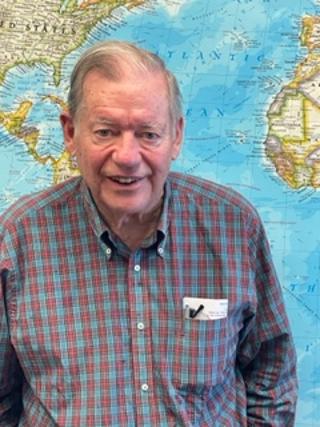 |
|
2022/2023 DSF Research Fellows Robert Gillespie and David Rothenberg
Bob Gillespie writes of his life’s work:
In 1964 the Population Council hired me to be their resident representative in Taiwan. With my Taiwanese colleagues we pretested and designed the first national family planning program to introduce the IUDs and oral pills. Family planning field workers were assigned to visit every household twice each year and provide the skills of planning pregnancies and births. All public and private physicians were contracted on a fee-for-basis to insert IUDs and perform vasectomies and tubectomies.
When John D. Rockefeller III, the Chairman of the Population Council board, visited Taiwan, I encouraged him to write and promote a Statement on Population to be signed by world leaders. He presented his Statement, signed by 22 heads of government, to UN Secretary-General U Thant on Human Rights Day, 1966. A year later an additional 18 world leaders signed.
In 1965, I was transferred to Turkey with a mandate to develop a model family planning project for the Kurds in the eastern provinces. The challenge was to deliver the services while they were migrating.
From 1969 to 1975, I was assigned to Iran to advise the government on family planning programs that would eventually achieve the 2 or 3 child family size. The first projects that were initiated in Esfahan, Iran, were multi-media family planning campaigns combined with full time family planning field workers delivering oral pills and condoms at the door.
In collaboration with UNESCO I designed four weeks of functional literacy texts for women and two weeks for men that focused on planning pregnancies and births. These texts integrated family planning with health services, the aspirations they had for themselves and their children, as well as understanding the population pressures were integrated into the 26-week program administered by schoolteachers and the young conscripts of the Literacy Corp.
After leaving Iran, I was seconded to the Ford Foundation to advise the government of Bangladesh on strategies for revising surgical contraception and IUDs just a few years after the civil war. There were many creative efforts to reconstruct the villages that had been devastated by the war and eventually the Grameen Bank started offering low-interest loans for women in the villages. Family planning was combined with many services that overcame child marriage and ultimately led to a dramatic drop in maternal and child mortality.
In 2005, I co-produced“No Vacancy,” a documentary chronicling family planning programs around the world. A feature-length version was shown at film festivals and a 60-minute version aired on PBS. A companion book of the interviews is available on our website, www.populationcommunication.com. .
Beginning in 2010, we commissioned country specific reports on population stabilization in collaboration with the Partners in Population and Development (PPD). The reports focused on Bangladesh, Egypt, Ethiopia, Ghana, the states of Bihar and Uttar Pradesh in India, Kenya, Mali, Nigeria, Pakistan, Senegal, Uganda, Yemen, Zimbabwe, Democratic Republic of Congo, Madagascar, Philippines, and Tanzania. We are planning to commission reports for Cameroon, Mozambique and Angola. For the last 12 years I have made presentations at the PPD annual meetings on the progress of the reports. The PPD countries represent 59% of the world's population.
We are now focusing on the links between exponential population growth and the peak and depletion of gas, oil and coal and the rare minerals required for solar and wind energy.
Our country specific reports will assess the geographic, biologic and physical realities of declining water tables, rising sea levels, desertification, loss of arable land, harvesting the biosphere, compromising biodiversity, and deforestation, all exacerbated by atmospheric changes that are becoming increasingly more predictable.
I have read many of Vaclav Smil's books. A recent interview with him in the LA times quotes him as saying, "What are the chances that after going from 86% to 83% during the first two decades of the 21st century, the world will go from 83% to zero during the next two decades? Especially as a few weeks ago, China announced an additional 300 million tons of new coal production for 2022, and India an additional 400 million tons by the end of 2023. We are still running into fossil fuels, not away from them."

 |
|
His books and recordings in the field of interspecies music include Why Birds Sing on birds, Whale Musicon whales, Bug Music on insects and Nightingales in Berlin on one very special species of bird and the humans who make music with them. Additional books include Survival of the Beautiful and The Possibility of Reddish Green. These works have been translated into many foreign languages and have been the subject of documentary films and radio programs in many countries, including Germany, France, Finland, Norway, Denmark, the UK and the United States, including the BBC feature-length TV program Why Birds Sing and the independent documentary Nightingales in Berlin.
His latest book is Invisible Mountains, a work of poetry, and Whale Music, which comes out in January 2023. Fall 2023 brings The Secret Sounds of Ponds, along with a new album based on the music of unknown underwater freshwater creatures.
“It’s great to see and listen to David Rothenberg’s work,” writes Peter Gabriel,“harnessing science and music to point out the path of potential dialogue with the natural world and all the wonderful creatures within it.”
Rothenberg is distinguished professor of philosophy and music at the New Jersey Institute of Technology.
www.davidrothenberg.net
www.nightingalesinberlin.com
www.terranovamusic.net
some short videos:
Summer Symphony, on playing live with bugs:
https://www.youtube.com/watch?v=BVErkvDQ2Fk
Dawn Chorus Plus One:
https://youtu.be/01Ji3pdzzUY
The song of the mockingbird decoded:
https://www.youtube.com/watch?v=FwD0ij_CWoM

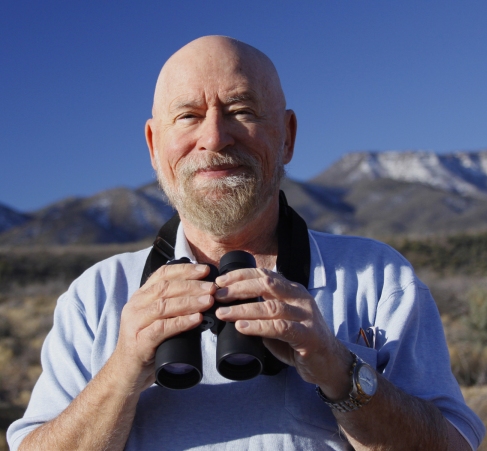 |
|
Con Slobodchikoff is CEO of Animal Communications, Ltd, Director of the Animal Language Institute, author of Chasing Doctor Dolittle: Learning the Language of Animals (St. Martin’s Press), and lead author of Prairie Dogs: Communication and Community in an Animal Society (Harvard University Press). He is also Professor Emeritus of Biology at Northern Arizona University, Flagstaff.
He is an expert at decoding animal language, using innovative experimental and analytical techniques. His work has shown that prairie dogs have a sophisticated animal language having all of the design features of human languages. He has an international reputation in the field of animal behavior.
He has been featured in a variety of news media articles and interviews, including:
Magazines:
Smithsonian Magazine, National Geographic, Discover Magazine, People Magazine, Phoenix Magazine, Best Friends Magazine, Reader’s Digest, and Boy’s Life.
Radio Interviews:
“Diane Rehm Show,” “NPR Morning Edition,” “Radiolab”, NPR’s “All Things Considered”, and NPR Flagstaff, Phoenix, Santa Fe, Idaho, Park City Utah, and Colorado; “BBC World News with Ed Butler,” “Blue Sky Saskatchawan,” “Lapham’s Quarterly.” His work also had a spot in “Wait, Wait, Don’t Tell Me.”
Television:
NBC Dateline, ABC World News with Peter Jennings, CNN, Country Canada, Quantum (Australia), Tierzeit (Belgian-German TV), Turner Broadcasting, and Brixen Productions (Discovery Channel). A joint production by BBC and Animal Planet did a one-hour documentary of his work, shown in 2010 by BBC TV in Europe and in 2011 on Animal Planet as part of the Mutual of Omaha Wild Kingdom series.
Newspapers:
LA Times, Boston Globe, Denver Post, ArizonaRepublic, Arizona Daily Sun, Arizona Daily Star, Washington Post, and the New York Times.
More interviews and features can be found on Google.
Con has written or co-written some 100 scientific papers and popular articles on animal language, animal behavior, and evolution. He has also edited three books on these topics. Con also writes or co-writes several blogs, including Reconnect With Nature Blog (www.reconnectwithnatureblog.com), the Dog Behavior Blog (www.dogbehaviorblog.com), and the Dr Con page on Facebook (www.facebook.com/doctor.con). His website is: www.conslobodchikoff.com.
Con has a B.S. and a Ph.D. degree from the University of California, Berkeley.
For Some Videos of Dr. Slobodchikoff’s work with Prairie Dogs:
Prairie Dog Language:
http://www.youtube.com/watch?v=y1kXCh496U0
Prairie Dog Social Life:
http://www.youtube.com/watch?v=PysWPMSjukk
Prairie Dog Ecology:
http://www.youtube.com/watch?v=XmgQb75A2rM
Prairie Dog Conservation:
http://www.youtube.com/watch?v=16rvjTydnaw

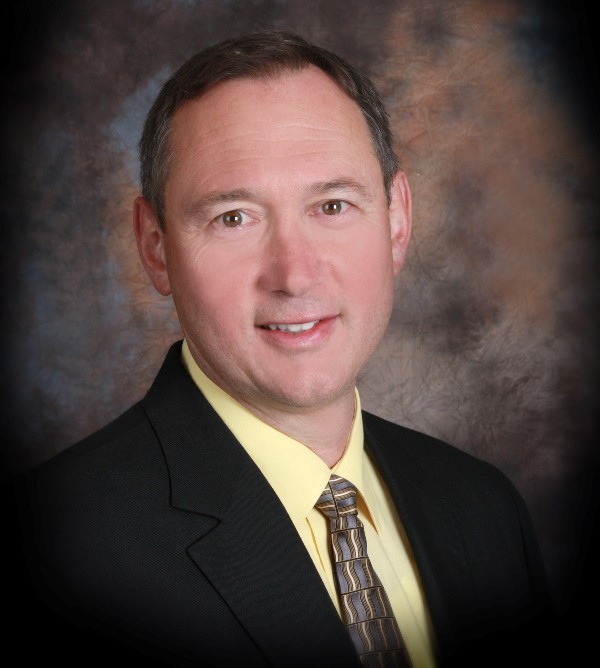 |
|
Summary of My Work as it Pertains to Animals and Art
My career has been multifaceted. In the visual arts, I have focused much of my time and energy on the production of traveling museum exhibitions, which edify the public about wildlife, but also domesticated animals, ecology, and the environment. In 1998, I formed a limited liability corporation for the principle purpose of producing and managing traveling exhibitions for display at museums and related art, cultural and scientific institutions in North America and abroad.In addition to serving as President of that company for the past 20 years, I have spent a portion of that time as author (most notably, American Wildlife Art), lecturer, occasional guest curator, and adjunct faculty at colleges and universities.
Among exhibitions produced or toured by David J. Wagner, L.L.C. are the following: America's Parks, American Birds, American Still Lifes, American Studio Glass, American Wildlife Art, Andrew Denman: The Modern Wild, Animals in Art, Art and the Animal (from the Society of Animal Artists), Art of the Dive / Portraits of the Deep, Art of the Rainforest, Biodiversity in the Art of Carel Pieter Brest van Kempen, Blossom ~ Art of Flowers, Brian Jarvi's African Menagerie, Cory Trépanier's Into The Arctic, Crocodilian Scratchboards by John Agnew, Endangered Species, Flora and Fauna in Peril, Environmental Impact, Exquisite Miniatures by Wes and Rachelle Siegrist, Feline Fine: Art of Cats, John James Audubon, Kent Ullberg: A Retrospective, LeRoy Neiman, On Safari, LeRoy Neiman: A Retrospective, Masters of American Photography, Masterworks from The International Guild of Realism, Paws and Reflect: Art of Canines, Robert Bateman - A Retrospective, Sandy Scott: A Retrospective, Sayaka Ganz: Reclaimed Creations, Society of Animal Artists National Geographic Society Outdoor Sculpture Garden, The Horse In Fine Art (annual exhibition of the American Academy of Equine Art), The Sea of Cortez, The Art of Robert Bateman, Thomas D. Mangelsen: A Life in the Wild. These exhibitions and others have toured and continue to tour to venues nationwide and in Canada under the auspices of David J. Wagner, L.L.C.
I sometimes coordinate guest appearances by artists at venues hosting my company’s exhibitions, in addition to occasionally serving as guest speaker myself. I also serve as principle copy writer and editor of our exhibitions’ texts. But mostly, truth be known, I spend most of my time marketing and managing our traveling museum exhibitions. Before all of this, I was a museum director for 20 years.
David J. Wagner, Ph.D.
Curator/Tour Director
Member/President
David J. Wagner, L.L.C.
Hyperlinks To David J. Wagner, L.L.C. Content
Current Exhibitions: https://www.davidjwagnerllc.com/exhibitions.html
Past Exhibitions: https://www.davidjwagnerllc.com/pastexhibitions.html
Educational Events: https://www.davidjwagnerllc.com/events.html
Website: https://www.davidjwagnerllc.com/
Interviews on YouTube: https://www.youtube.com/channel/UCqcSrqH6R32dd-6UM3LdImA

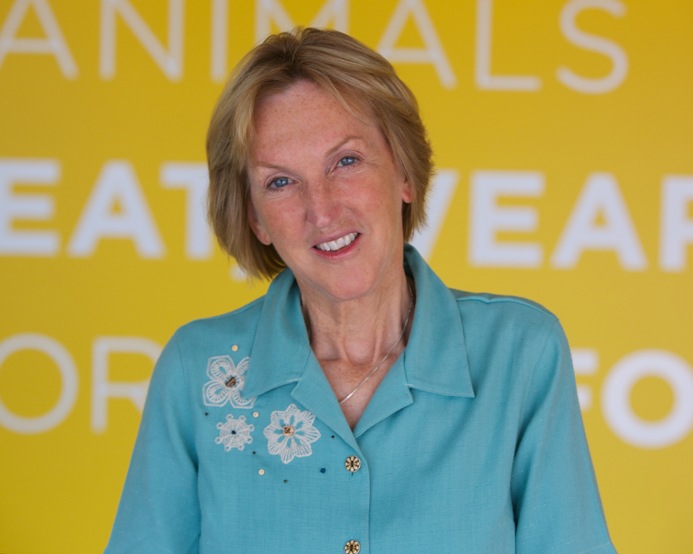 |
|
http://www.ingridnewkirk.com/
Ingrid Newkirk is one of the world’s leading and most effective advocates for the rights of all sentient beings. Her work, as President and Co-Founder of PETA, People for the Ethical Treatment of Animals, has transformed animal rights, animal welfare, animal protection and animal liberation movements worldwide, educating hundreds-of-millions of people as to the critical importance of kindness, kindness and yet more kindness. There has never been an ecological pioneer quite like her.


Dr. DeVore during a visit to one of Georgia’s “biological hotspots,” Broxton Rocks. Photo © M.C.Tobias/Dancing Star Foundation |
|
Dr. Melanie DeVore
Dr. Melanie DeVore received her Ph.D. in Plant Biology at Ohio State University. She was an Assistant Professor of Biology at Sam Houston State University and currently is the Georgia Power Endowed Chair in Environmental Science and a Professor of Biological and Environmental Sciences at Georgia College, an adjunct faculty member in Science and Society at Arizona State University, and is affiliated with the Paleontology Division of the Burke Museum, University of Washington.
DeVore has published numerous papers pertaining to extant and fossil plant biology. She has done extensive fieldwork in Canada and the United States in addition to her dissertation research in the Andes of Argentina and Chile. The common thread of most of this work has been the origin and evolution of flowering plants into high elevation habitats and temperate climates. DeVore has been an invited speaker in symposia at national and international meetings and is an active member of the American Society of Plant Taxonomists and the Botanical Society of America. She is a Past President of the Georgia Academy of Science.
The influence of hundreds of students, along with extensive teaching responsibilities to cover courses in ecology, environmental science, evolution, and systematics, stimulated an innate tendency for DeVore to dovetail active conservation with the classroom. Since 2000 she has worked with more than 300 students on conservation themed courses and projects in the Bahamas. She currently volunteers her services to the annual Teacher Workshop and San Salvador Island Seacamp operated by the Bahamian Reef Environmental Education Foundation. DeVore is on the Board for San Salvador Island Living Jewels and has contributed to that group’s charge of establishing national parks and marine protected areas on the Island.
Locally, in Georgia, Dr. DeVore has utilized the 540 acres of property associated with author Flannery O’Connor’s Milledgeville home –Andalusia- to engage both the general public and Georgia College students in exploring and connecting with biodiversity in their own region.
Dr. DeVore also serves the Stonerose Interpretive Center & Eocene Fossil Site in Republic, Washington as a science adviser and is a co-author of the guidebook the Center uses for identifying fossil plants. Each year DeVore contributes talks to opening weekend or National Fossil Day, and helps curate the Center’s fossil collection and field sites.
In 2015 Dr. DeVore traveled to Rwanda, as a guest of the Dian Fossey Gorilla Fund International, to visit the iconic mountain gorillas. Immediately the planet’s “biggest botanists” triggered an interest in Dr. DeVore in the way our own species perceive plants. Gorillas have a deep knowledge of plants, and thus, can humans really be “plant blind”? This question is one that intrigues DeVore. A recent visit to Karisoke Research Center has prompted Dr. DeVore to volunteer with their Memoirs Program and provide expert guidance and resources to University of Rwanda botany students to connect with their own flora. One of Dr. DeVore’s critical questions for study and activism, spans numerous ecological disciplines. How best to utilize botanical empirical data to help save an iconic, critically endangered species? In this case, that would be the mountain gorillas, whose numbers are down to fewer than 1,000 individuals. With in-depth botanical knowledge, and the training of the next generation of young Rwandan scientists, perhaps there are non-invasive approaches to saving these remarkable fellow beings who inhabit three adjoining national parks: Volcanoes National Park in Rwanda, Virunga National Park in the Democratic Republic of Congo, and Mgahinga Gorilla National Park in Uganda.
With its emphases on international global conservation, animal protection and environmental education, Dancing Star Foundation is very pleased indeed to announce its 2016 Dancing Star Foundation Research Fellow, Dr. Melanie DeVore.

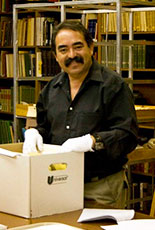 |
|
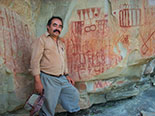 |
|
Gustavo A. Ramírez Castilla
Dancing Star Foundation is honored to announce its 2014 Research Fellow, Gustavo A. Ramírez Castilla.
Director of the Mexican Network of Archaeology (“RMA”) and Researcher of the National Institute of Anthropology and History of Mexico in Tamaulipas State, Gustavo has devoted his life to the research and conservation of the archaeological heritage of northeastern Mexico and to its natural environment. One of his primary goals has been to better grasp the profound values of cultural expressions of many cultural periods, which makes the world more rich and interesting; and to champion the cause of mutual understanding and respect between peoples in order to help nurture tolerance between cultures and global peace. Writes Gustavo, “As social scientists, our work is not complete until we return the newly acquired knowledge perpetually being unearthed, back to the people to whom this rich heritage belongs.” Gustavo has excelled in disseminating such knowledge through a combination of highly regarded conferences and exhibitions, as well as with scientific and popular articles, in addition to the ten books he has written or co-written.
Gustavo has also developed the concept, design and actual script for the Museum of Huastec Culture (2003), in the city of Tampico, Mexico. This gorgeous contemporary museum provides a unique window on the material, artistic and spiritual expressions of the Huastecan people. It reveals their living culture, as well as the continuing processes of change and adaptation from the remote past until now, where Huastecan Nature – depicted as Goddess Teem or Mother Earth - plays a main role. This museum is a space for reflection, learning and appreciation of the Huastec Indians of today and their contributions to Mexican history and culture.
As part of his work, Gustavo Ramírez Castilla has promoted increased ties with American researchers, with workshops between the Center of Archaeological Research at the University of Texas at San Antonio and the INAH Tamaulipas, and the International Colloquium of Northeastern Mexico and Texas held from 2005 until now. In 2009 he created what is called the Red Mexicana de Arqueologia (Mexican Network of Archaeology), a Social Network devoted to the free interchange of information between professional archaeologists and other related fields. The RMA has over 3600 members all over the world, including students, professionals and other interested parties. Its services include research tools, forums, news, events and job offerings, among others. RMA is now a referent for Mexican archaeology and is helping to spread the knowledge and to connect students with professionals. In addition, this critical RMA has drawn attention to the necessity of promoting natural and bio-cultural heritage, as well pointing to the vulnerability to vandals of in situ archaeological materials.
Most recently, Gustavo has been intimately involved in the work to grasp the mystery of nearly 5,000 recently discovered ancient rock paintings throughout northeastern Mexico, painted by several tribes unknown in Mexico to this day – and dating perhaps to over 3,000 years ago. Many of the paintings, in several colors and forms, depict aspects of nature and of plant and animal life.
Red Mexicana de Arqueología: www.remarq.ning.com
Book Panorama Arqueológico de Tamaulipas
More Dancing Star Research Fellows

